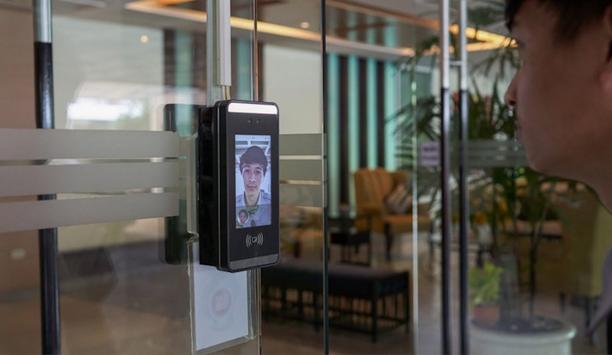Advances in LPR:
License plate recognition (LPR) is used widely today in law enforcement applications, but the enterprise security market is also catching on to benefits of the technology – especially when it is combined with other video analytics. PlateSmart Technologies, Oldsmar, Fla., is working to maximise those benefits and to use LPR as a real-time, proactive tool for physical security.
PlateSmart’s ARES Enterprise Video Analytics System is a software-only platform that combines LPR with video analytics. The system is compatible with the newest HD cameras or can be retrofitted to legacy cameras, even analog. The system can work alone or can be integrated with existing video management systems and server hardware.
The newest option is availability of LPR software inside the camera: PlateSmart offers an LPR-based video analytics “app” that can be loaded onto a Samsung Techwin Wisenet III camera. The company is working with other camera manufacturers, too. “That’s one of the beautiful things, we are a software-only, open-platform technologies, and we can easily conform to a given camera platform if there is enough processing capability,” says John Chigos, PlateSmart’s CEO.
Combining LPR with video analytics provides better, more proactive, real-time results, adds Chigos. Integration of LPR and video analytics with various federal, state or private industry databases provides additional real-time data about vehicles as they come, go and move around a secured site. For example, the system can tell if a vehicle drives into an area where it shouldn’t go, say in a certain parking lot, in effect recognising the behavior of the vehicle.
Benefits of Platesmart ARES:
“Technology such as ours will be part of a solution that, combined with human intelligence and other video analytics capabilities, can prevent acts of terrorism,” |
In addition to reading the license plate number, Chigos says the system can also read the jurisdiction, country and province on the license plate, and video analytics can recognise the type of vehicle, its color, even the make and model (by recognising emblems or logos on a vehicle). Although designed for the U.S. market, the system easily adapts to applications throughout the world; for example, the license plate numbers in Europe are larger and easier to read. (In Europe, LPR is often referred to as ANPR [automatic number plate recognition].)
PlateSmart’s system can also enable patterns to be developed based on the actions of a vehicle; databases can be created of vehicle activity; and “black lists” or “white lists” of vehicles can be compiled. “We do not touch the data; all the data is given to the end user,” says Chigos. “We set up the rule sets, or they can set them up.”
“Technology such as ours will be part of a solution that, combined with human intelligence and other video analytics capabilities, can prevent acts of terrorism,” adds Chigos. “Technologies are changing to meet market needs, and we are part of that solution.” The company also offers a facial recognition software suite that can match video images of a driver’s face against faces in a driver’s license database, for example.
High-speed vehicle tracking:
The ARES system reads plate number and performs other analytics using a single video image, unlike some LPR systems that use two cameras – one to view the total image for context and a second, specialised IR camera to read the numbers on the license plate. There are also no other hardware elements, such as frame grabbers; it’s just the cameras and the software. Scalability is easy given that one installation may include hundreds of cameras plugged into the system.
"The system can also make out three different numbers in a single video image, and the overall accuracy is 90 percent." |
PlateSmart says its system can read the license numbers from vehicles traveling at rapid speeds – the system captures numbers on vehicles traveling between 0 and 80 miles per hour on a highway between Tampa and Orlando, Fla. The system can also make out three different numbers in a single video image, and the overall accuracy is 90 percent. Chigos emphasises that means 90 out of 100 vehicles passing by; sometimes other manufacturers quote accuracy figures based on the number of plates it recognizes, not on the total number of vehicles passing by. Therefore, the percentage is higher.
Market sectors:
Applications so far have included water treatment plants, ports, and military bases. An initial pilot program was implemented at the Republican National Convention in 2012 in Tampa. The system is currently being used at Port Tampa Bay, Florida’s largest maritime port and the 16th largest in the United States. The system can also be used for site surveillance at hospitals, universities, and manufacturing and distribution centers. “Our technology takes advantage of cameras these facilities already have installed,” says Chigos. “When you add LPR on top of existing systems, we produce additional information without having to incur large capital expenditures.”
Teaming up with defense systems integrator enrGies, Huntsville, Ala., PlateSmart is working to perfect the first LPR and video analytics technology for Unmanned Aerial Vehicles (UAVs, or drones) to assist security agencies and military personnel in combatting crime and terrorism. Soon the “eye” in the sky will be able to read your license plate numbers.










































